Cats might act independent, but that does not mean they do not have preferences. In fact, there are many things cats absolutely love that often go unnoticed by even the most devoted owners. From scent-based bonding to playful hunting games, cats have emotional and physical needs that go far beyond a full food bowl and a clean litter box. If your cat seems bored, distant, or restless, chances are you are not giving them enough of what they truly enjoy. This list breaks down 18 things cats love that most owners do not do nearly enough and how simple changes can make your feline feel more content and connected every day.
Daily Interactive Play
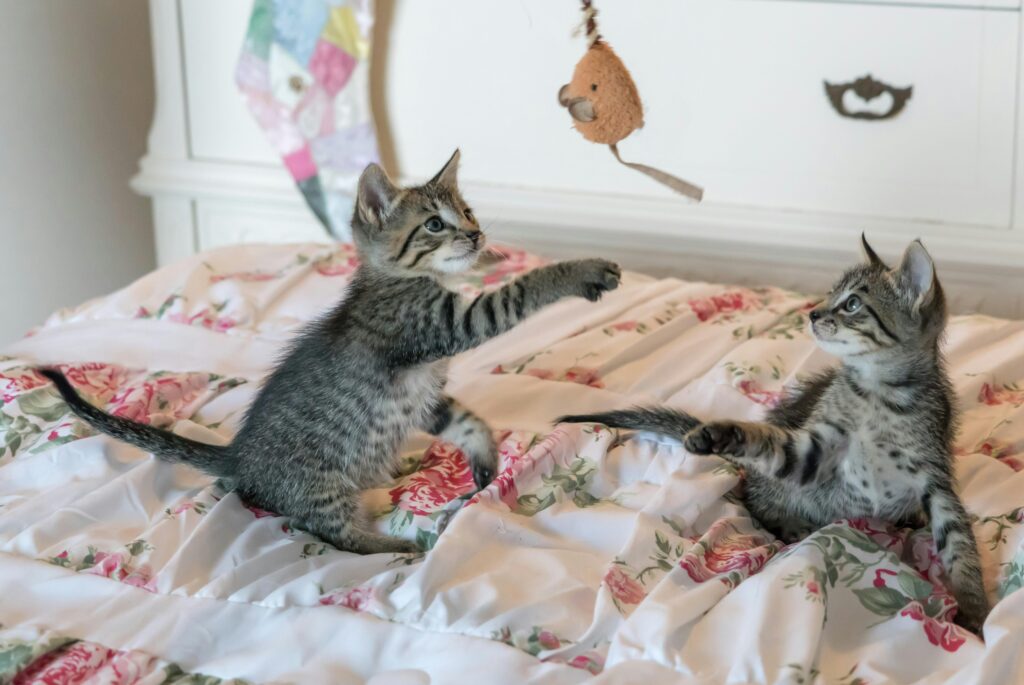
Cats are natural hunters, and interactive play is how they simulate the chase. In the wild, they stalk, pounce, and capture prey to satisfy both hunger and instinct. In a home environment, that drive still exists, but without stimulation, it turns into boredom, restlessness, or even aggression. Wand toys, feather teasers, and laser pointers let your cat express these instincts safely and positively. The key is to move the toy like prey, not just wiggle it in front of them. Let them stalk, pounce, and finally catch the toy. Ending the session with a treat mimics the satisfaction of a kill. Play sessions of 10 to 15 minutes twice a day work wonders for cats of all ages and keep obesity and depression at bay.
Vertical Space to Climb
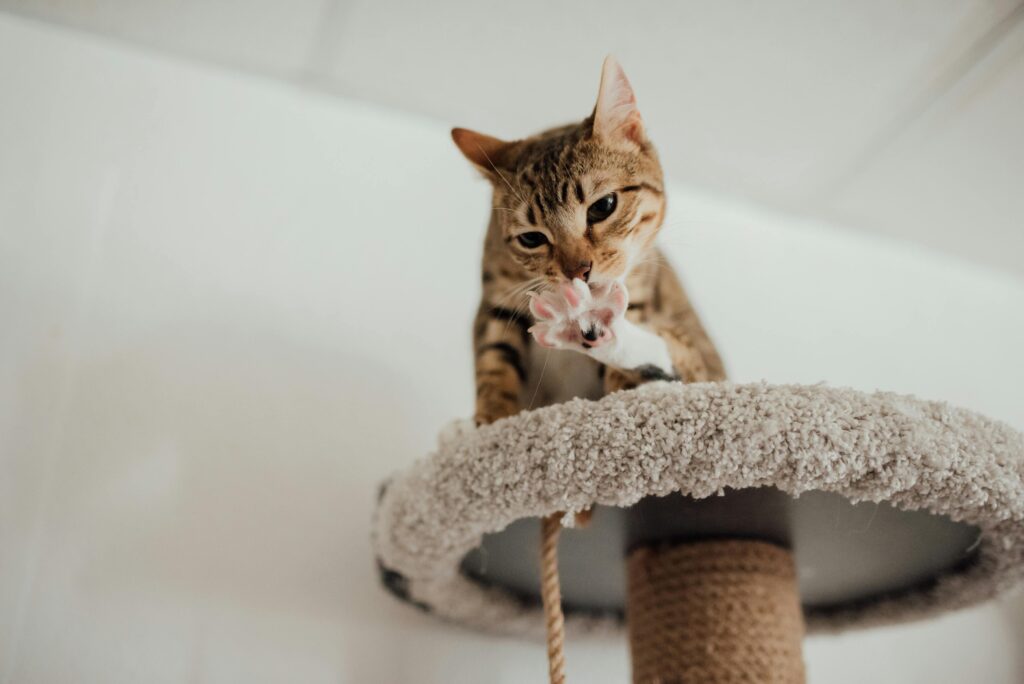
In nature, cats use trees and high ledges for safety, rest, and hunting. Domestic cats have the same need for vertical exploration. Providing cat trees, shelves, and window perches gives them a chance to jump, climb, and observe from above. This not only helps with physical exercise but also reduces tension in multi-cat households by creating different zones of territory. Cats feel safer and more in control when they can elevate themselves and survey their surroundings. Without access to vertical space, they may turn to climbing on furniture, countertops, or even your shoulders. Investing in multi-level furniture, or rearranging bookcases and safe ledges, gives cats more options to meet their instinctual needs.
Fresh Water in Motion
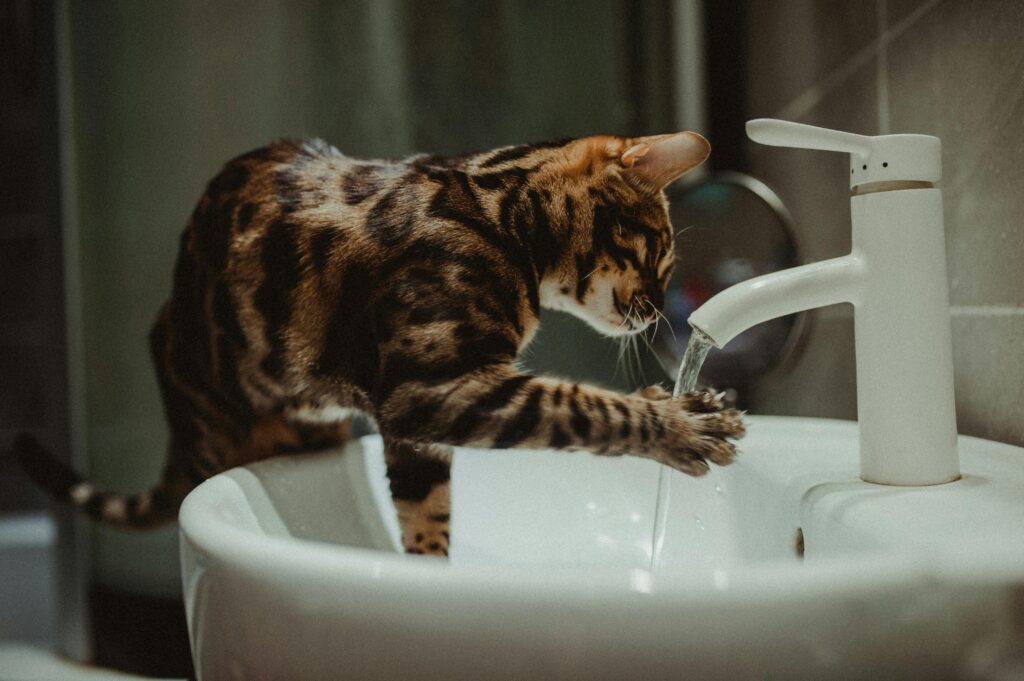
Cats are notoriously picky about water. One reason many of them do not drink enough is that standing water can smell stagnant or taste off. Their ancestors in the wild relied on running water sources, which are less likely to carry bacteria or parasites. This instinct still exists. Pet fountains solve this problem by keeping water in constant motion, which also keeps it better oxygenated and cooler. Some cats may even be enticed by the sound of water movement. Ceramic or stainless steel fountains are ideal, as plastic ones can develop biofilm over time. Encouraging hydration through a water fountain is especially critical for preventing urinary tract problems, which are common in cats that eat mostly dry food.
Regular Brushing
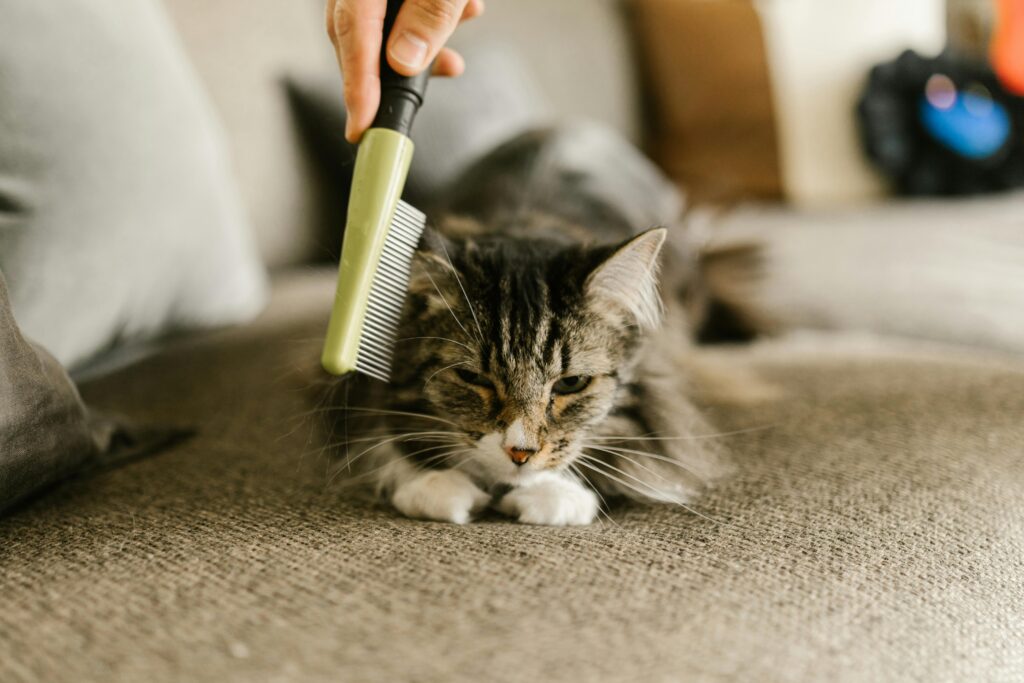
Even though cats groom themselves, regular brushing by their humans provides several benefits that self-grooming cannot. Brushing helps remove loose fur, which reduces hairballs and the amount of fur shed on furniture. It also prevents mats, which can become painful and lead to skin infections, especially in long-haired breeds. Beyond hygiene, brushing is a bonding activity. It mimics the mutual grooming that cats do with those they trust. Use a soft-bristle brush or grooming glove and start slowly. Focus on areas like the cheeks, back, and chest, where most cats enjoy attention. Gradually work up to more sensitive areas. Cats that are brushed regularly often become calmer and more comfortable being handled.
Window Views

Cats are visual creatures that love watching the world go by. A view of a bird feeder, tree, or quiet street provides endless entertainment and reduces boredom. Window watching also gives indoor cats a taste of the outside world without the risks. Placing a bed, mat, or cat perch near a window transforms it into their personal observation deck. You can also add a bird feeder outside to create a dynamic, ever-changing scene. For apartments or places without direct window access, a small shelf installed near a window works well. A happy cat will spend hours each day sunbathing, watching movement, and even chattering softly in response to birds or squirrels.
Quiet Time With You

Many people assume cats want to be alone, but that is not entirely true. While cats value their independence, they also form strong emotional bonds with their owners. They may not demand attention the way dogs do, but they appreciate calm, shared moments. Simply sitting near your cat while you read, watch TV, or work on a laptop provides comfort. These quiet moments reassure your cat that you are present and trustworthy. Some cats will curl up next to you or even on your lap. Others may simply rest nearby, enjoying your company without the need for constant touch. Making time for quiet companionship helps build a deeper connection and reduces stress for both of you.
Scratching Variety
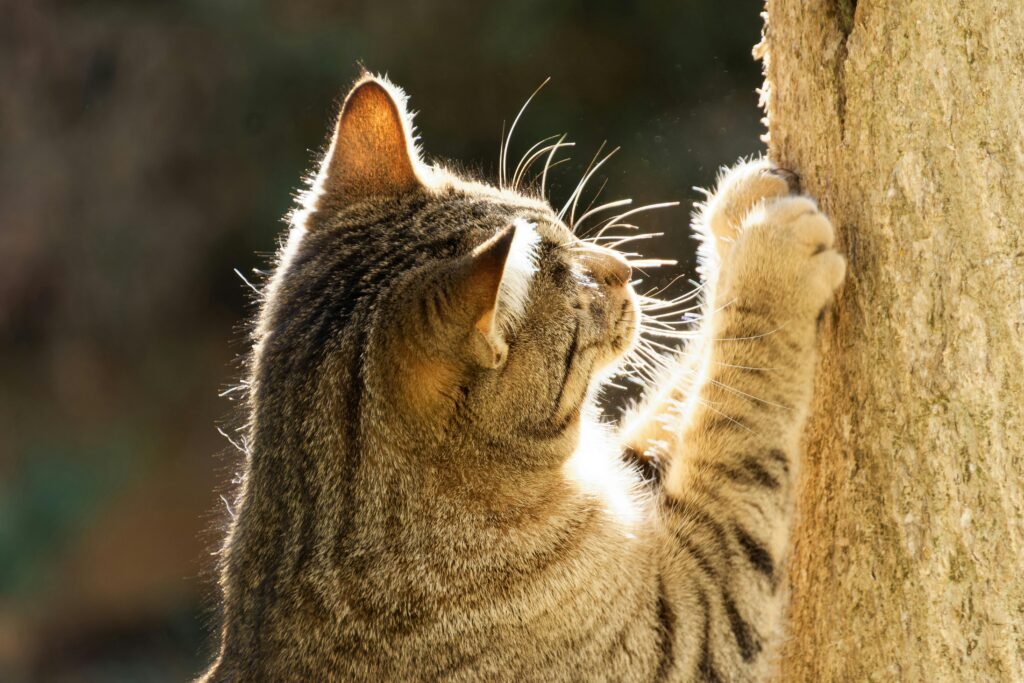
Scratching is not just a random habit. It is how cats mark territory, stretch their muscles, and maintain claw health. Many owners provide one horizontal scratcher and call it a day, but that does not reflect a cat’s full needs. Some cats prefer vertical surfaces, others prefer horizontal or inclined ones. Materials also matter. While cardboard is common, some cats prefer sisal, wood, or even carpet textures. Offering a variety of scratchers in different rooms helps prevent them from turning to furniture or walls. Observing where and how your cat likes to scratch can guide your setup. Reinforce their use by rubbing a bit of catnip on the surface or placing the scratcher near their favorite lounging spots.
Hiding Spots
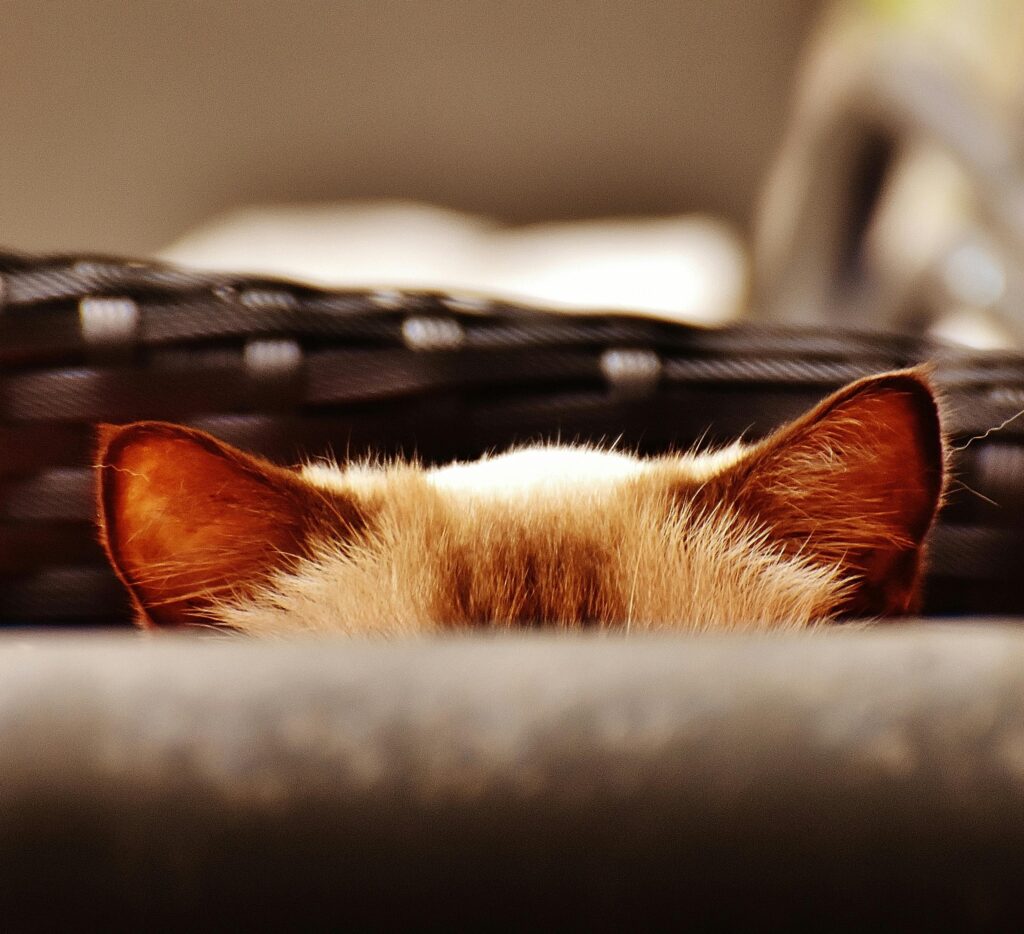
Cats instinctively seek out small, enclosed spaces where they can retreat and feel safe. In the wild, dens protect them from predators and give them a quiet place to rest. In your home, these hiding spots help reduce anxiety and overstimulation. Many cats will crawl into closets, under beds, or behind furniture when they need alone time. Instead of discouraging this, provide intentional hiding spaces like covered cat beds, cardboard boxes, or fabric tunnels. Multiple hiding options in different parts of the house are ideal. These spaces are especially important during loud events like storms or when guests visit. Giving your cat a safe retreat helps them self-regulate and stay calm.
Scent Exchange

Cats rely on scent to understand their world. They use scent glands on their face, paws, and tail base to mark people and objects. When your cat rubs its face against you, it is not just seeking attention. It is marking you as part of its social group. Owners can return the gesture using a soft towel or cloth to gently wipe the cat’s face and then placing the cloth on furniture, bedding, or new items. This helps your cat feel like their environment smells familiar. Swapping bedding between cats in the same household can also help reduce tension. Understanding and participating in scent exchange is a subtle but meaningful way to deepen your bond with your cat.
Slow Blinking
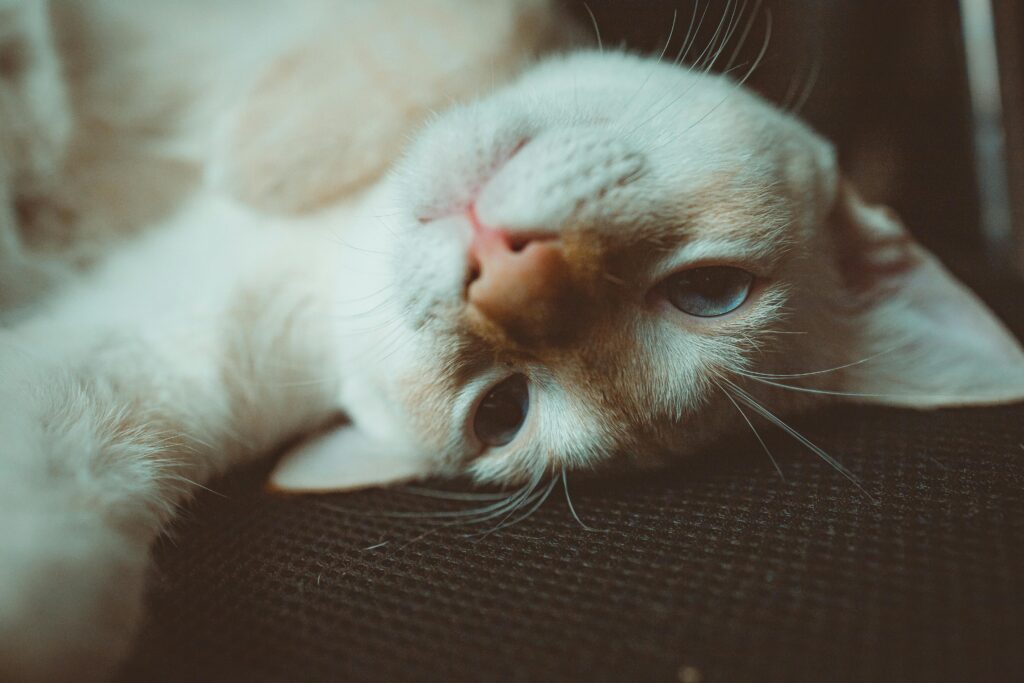
In the feline world, eye contact is a form of communication. A direct, unblinking stare can feel threatening to cats. On the other hand, a slow blink is seen as a gesture of trust and affection. When your cat looks at you and blinks slowly, it is saying it feels safe around you. Responding with your own slow blink can build trust and deepen your bond. Try relaxing your eyes, looking gently at your cat, and slowly closing and opening your eyelids. This calm exchange helps cats feel secure. It is a nonverbal way of saying “I’m not a threat, and I care about you.” Doing this regularly can help shy or nervous cats feel more confident in your presence.
Chatter Time
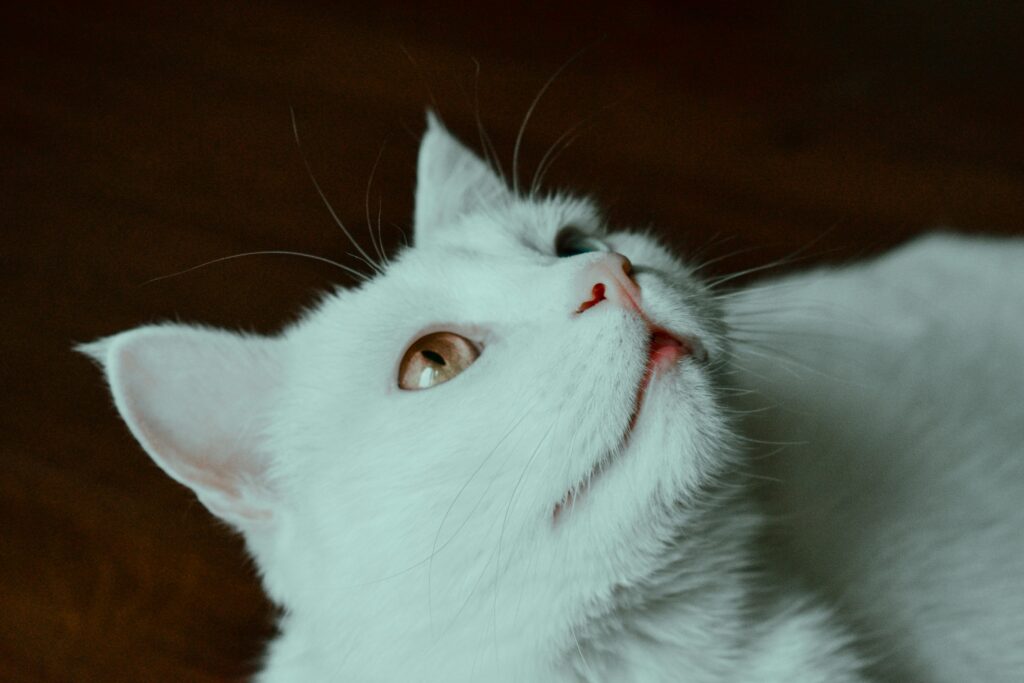
Cats may not understand words the way humans do, but they are highly responsive to tone, rhythm, and volume. Talking to your cat in a soft, calm voice shows them that you are engaged. Many cats will respond by meowing back, chirping, or even purring. Even quiet cats appreciate being acknowledged. Regular conversation reinforces your bond and can help your cat feel included in the household routine. Whether it is narrating your day, calling them by name, or using a gentle sing-song tone, the consistency of your voice helps them feel emotionally connected to you. It also sharpens their recognition of specific cues, like “treat,” “dinner,” or their name.
Rotating Toys
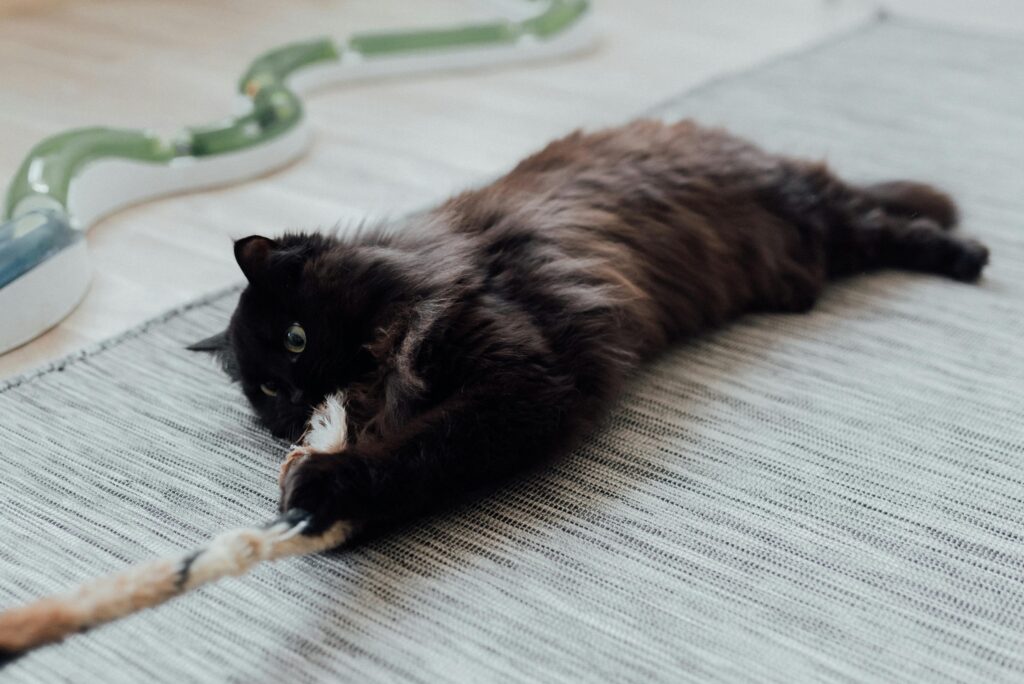
Leaving the same toys on the floor every day leads to boredom. Cats, like people, crave novelty. When a toy sits in the same corner for weeks, it loses its appeal. Rotating toys every few days helps maintain interest. You can place some toys in a box and bring them back out after a week, making them feel new again. Introduce different textures, sounds, and sizes. A crinkle tunnel one week, a fuzzy mouse the next. Toys with feathers, bells, or movement are especially engaging. This variety activates your cat’s natural hunting instincts and keeps them mentally stimulated. Fresh toys also reduce destructive behavior caused by boredom.
Treat Hunting
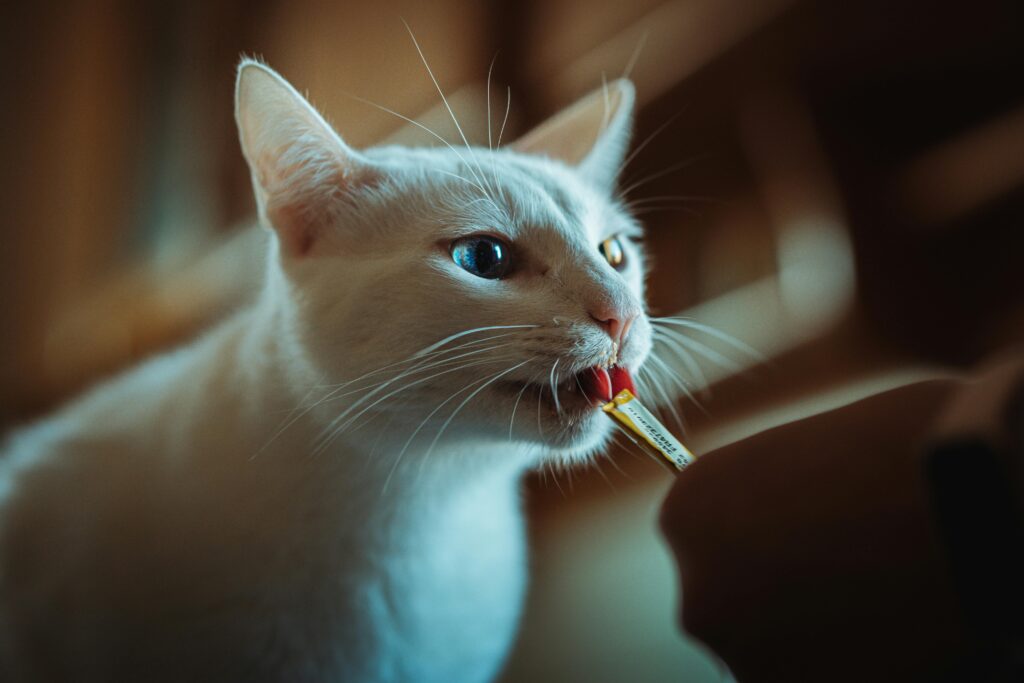
Cats are natural foragers and enjoy working for food. In the wild, they hunt small prey several times a day. Instead of always offering treats in a bowl or by hand, hiding them around the home creates a game. You can tuck them into puzzle feeders, under rugs, or in cardboard boxes. This encourages your cat to sniff, search, and “hunt,” which is mentally and physically rewarding. Food puzzles are also great for cats who eat too fast, as they slow down consumption and add stimulation. Making treat time more interactive engages your cat’s brain and satisfies the instincts that are often dormant in indoor-only environments.
Outdoor Time Safely
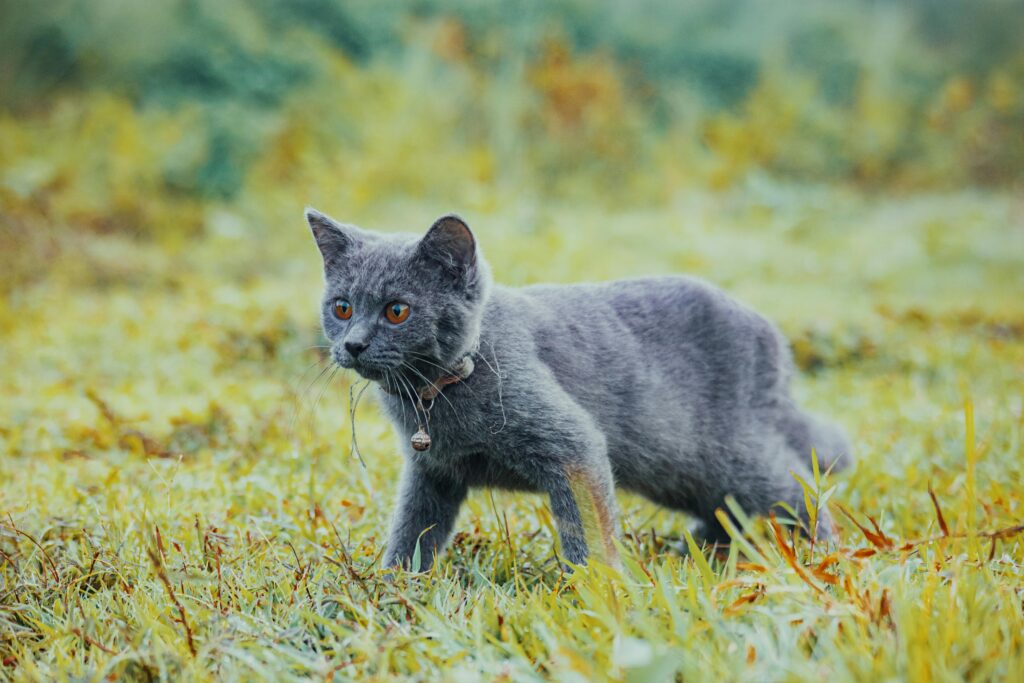
Many indoor cats live long, healthy lives without ever stepping outside, but that does not mean they have no curiosity about the outdoors. Birds, insects, fresh air, and natural scents all offer rich stimulation. A secure catio, a screened porch, or supervised leash walks allow your cat to explore without danger. Start with a harness designed for cats and practice indoors before stepping outside. Let them sniff around and lead the way. If a leash is not an option, opening a secure window with a screen or installing a mesh balcony tent can be just as exciting. These moments outside provide enrichment and break up the routine of indoor life.
Respecting Their Mood
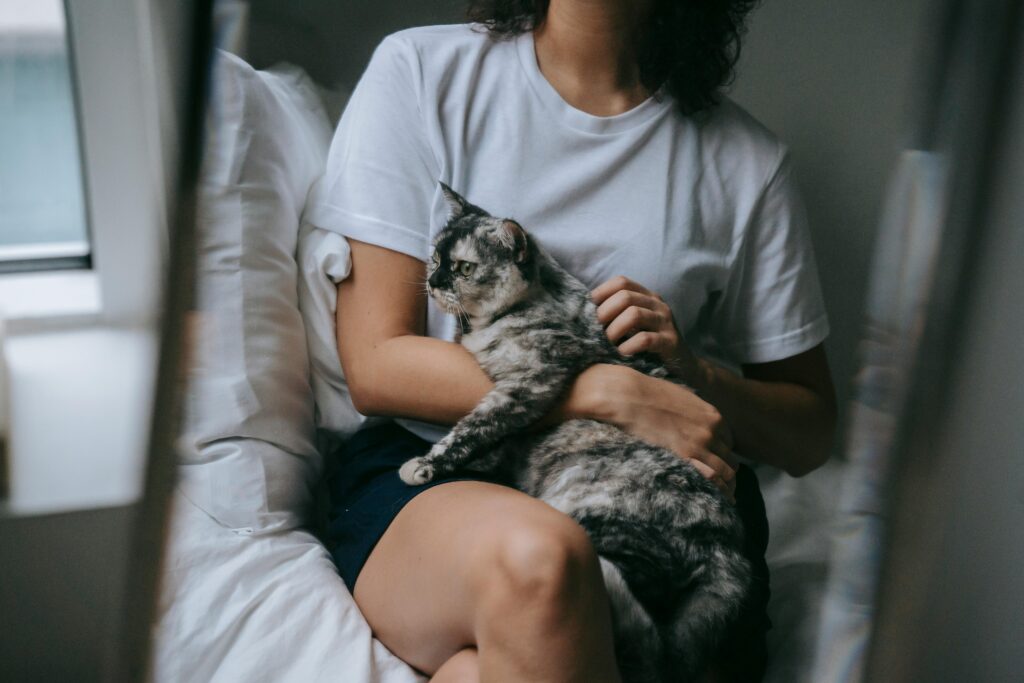
Cats are sensitive animals with changing moods. Forcing interaction when they are not in the mood can damage trust. Signs that a cat needs space include a swishing tail, pinned ears, flattened body posture, or turning away. Respecting these signals means backing off and letting them come to you when ready. Conversely, if your cat approaches you with a relaxed body, head butts, or purring, it likely wants affection. Understanding and respecting boundaries helps build a strong, respectful relationship. It also reduces the risk of scratches or bites caused by overstimulation. Giving your cat the freedom to say “not now” helps them feel safe and in control.
Warm Napping Spots

Cats seek warmth by instinct. They gravitate toward sunbeams, heated surfaces, and cozy fabrics. Providing warm places to nap makes them feel secure and comfortable. A sunny windowsill, a fleece blanket on the couch, or a heated pet bed can quickly become a favorite spot. Some cats love the warmth of laptops or freshly dried laundry. Make these areas accessible and safe. You can even use microwavable heating pads designed for pets. In colder months, be sure to offer extra blankets or enclosed beds to retain heat. Warmth soothes sore muscles, aids in sleep, and mimics the comfort of sleeping beside a sibling or mother in early life.
Routine and Predictability
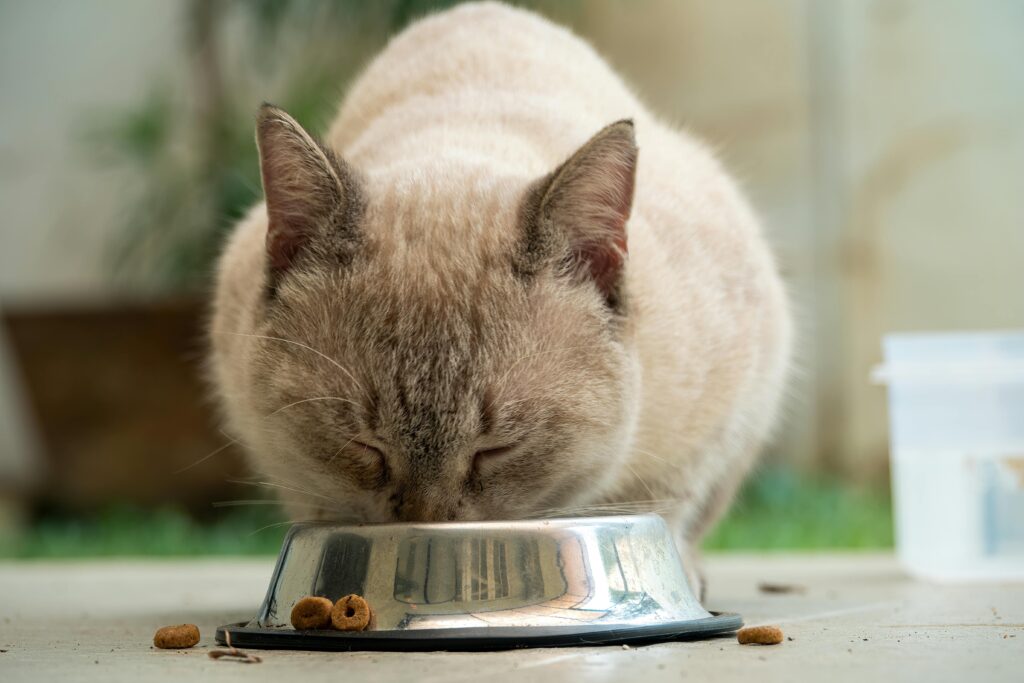
Cats find comfort in routines. Sudden changes in their environment or schedule can cause stress. Feeding them at the same times daily, scooping the litter box consistently, and maintaining a quiet household rhythm help cats feel in control. Even small changes, like moving furniture or altering their feeding area, can upset a cat. Try to make transitions gradually. If you need to change something, introduce it slowly and provide familiar scents nearby. Predictability builds trust. When your cat knows what to expect, it becomes more confident and relaxed in its surroundings. This leads to fewer behavior issues and a stronger bond between pet and owner.
Grooming Their Face
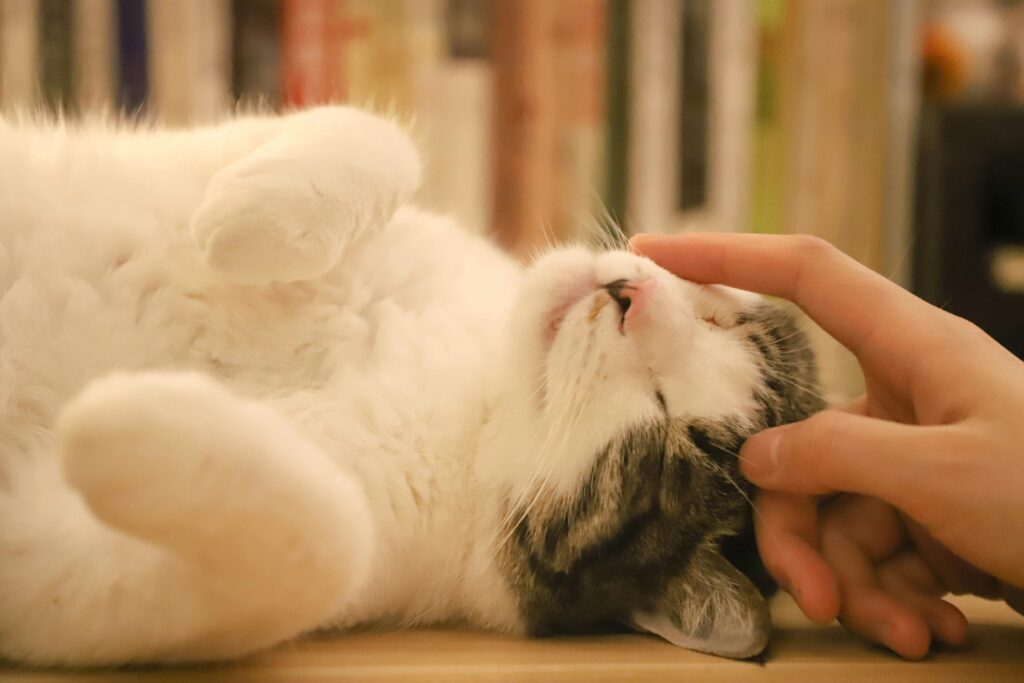
Cats enjoy gentle touches on their cheeks, chin, and forehead, where scent glands are located. These are the areas they use to mark you and their environment. Using your fingers or a soft brush, gently stroke these spots while watching for signs of enjoyment like slow blinks or purring. Grooming their face mimics social grooming among cats and reinforces your bond. Some cats will push their heads into your hand to guide you toward their favorite spot. This interaction is calming and reassuring. It builds familiarity and reinforces your role as a trusted figure in their life.
Read More: The Evolutionary Secrets Behind the Perfection of Cats
Disclaimer: This article was created with AI assistance and edited by a human for accuracy and clarity.

